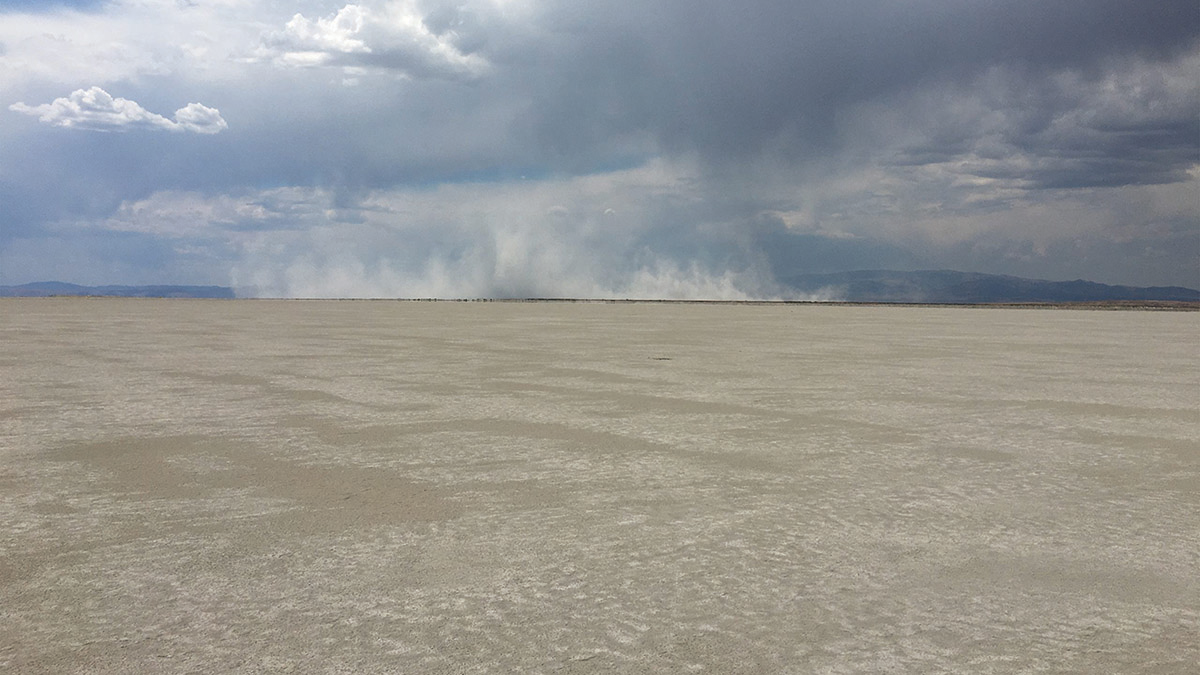As the Great Salt Lake continues to shrink, a new threat looms over the Wasatch Front: potentially harmful dust blowing from the lake’s exposed playa. Scientists at the U have found that sediments from the lakebed could pose a greater risk than other major dust sources affecting the Wasatch Front’s air quality, according to a recent study published in the journal Atmospheric Environment.
“You’re talking about a very large dust source located next to a very large population, and you’ve got elevated levels of manganese, iron, copper, and lead,” says senior author Kerry Kelly PhD’15, a professor of chemical engineering. “Lead is a concern for developmental reasons.”
The Great Salt Lake is a terminal body that collects runoff from a vast area, leading to an accumulation of metals also including arsenic and lithium. In another recent study led by U sociology professor Sara Grineski, researchers also found that dust from the lake disproportionately affects disadvantaged neighborhoods in Salt Lake County.
The study was the first to analyze the dust’s “oxidative potential”—a measure of its ability to react with oxygen and cause lung damage. “When you breathe in something that’s really reactive, it’s going to interact with the cells inside your lungs, and it’s going to cause damage,” notes Kelly.
The study also examined how dust from the Great Salt Lake might interact with human lung fluid. Using a synthetic lung fluid solution, researchers simulated the environment inside human lungs to see how quickly and easily metals from the dust particles could dissolve. This process, known as bioaccessibility testing, helps predict how much of these metals could potentially enter the bloodstream if inhaled. The results showed that metals from Great Salt Lake dust were more readily released in this simulated lung environment compared to dust from other sources.
Of particular concern were high levels of reactive metals, such as copper, manganese, and iron, detected in the dust. These metals dissolved more easily in the simulated lung fluid and can lead to lung irritation and inflammation, potentially contributing to health issues like asthma. The higher bioaccessibility of these metals in Great Salt Lake dust suggests a greater potential for absorption into the body and subsequent health impacts compared to dust from other sources.




Comments
Comments are moderated, so there may be a slight delay. Those that are off-topic or deemed inappropriate may not be posted. Your email address will not be published. Required fields are marked with an asterisk (*).